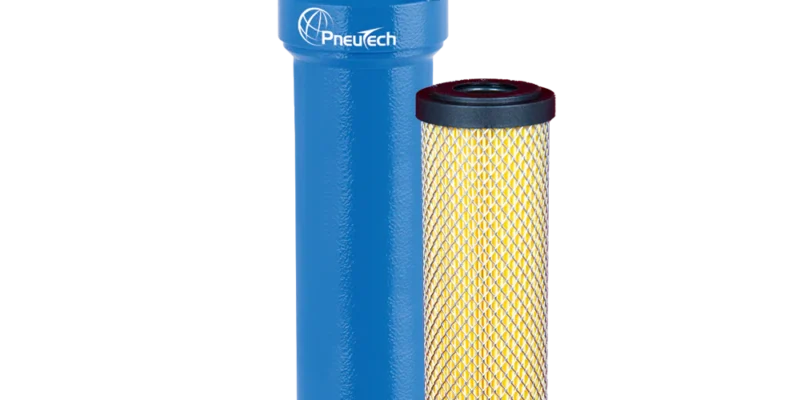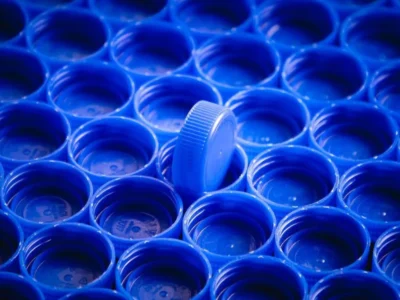Compressed air is a utility, but it’s also a process input, and a contaminated one without the right safeguards. Moisture, rust, oil aerosols, vapors, and microscopic solids ride along every time a compressor turns on. Inline Filtration and Separation solutions for industrial air systems remove these contaminants at the source and at the point of use, protecting products, people, and equipment. The payoff is tangible: fewer defects, tighter compliance to air quality standards, lower energy bills, and longer service life for everything downstream. This guide explains how inline filters and separators work, where they fit, and how to select technology that meets demanding industrial requirements.
Function of inline filtration in compressed air pipelines
Inline filtration in compressed air pipelines breaks a complex contamination challenge into manageable stages—each designed to capture a specific phase of contamination such as liquid water, oil aerosols, vapors, and particulates before they can damage downstream equipment or compromise product quality.
By positioning filters strategically throughout the air network—after compressors, dryers, and before sensitive tools or processes—inline filtration maintains air purity, protects instruments and valves, and extends the service life of pneumatic components. Properly staged filters also minimize pressure drop and reduce maintenance frequency across the system.
For expert insights on designing efficient inline filtration systems and ensuring ISO-compliant compressed air quality, visit PneuTech.
The core stages
- Bulk liquid separation: Aftercoolers condense a large portion of water out of hot compressed air. A cyclonic water separator or mist eliminator immediately downstream spins the flow to fling liquid to the housing wall, where it drains away. This step removes the heaviest load and prevents flooding of fine elements.
- Coalescing filtration: High-efficiency coalescing elements capture submicron aerosols (water and oil) and fine particulates. Droplets coalesce into larger drops that gravity drains from the element. Quality coalescers routinely reach 0.01 micron with 99.999% efficiency for aerosols, delivering very low oil carryover.
- Particulate clean-up: Depth or pleated particulate filters (often 1–5 micron) trap rust, dust, and desiccant fines, especially useful downstream of a dryer or as point-of-use protection for valves and instruments.
- Vapor adsorption: Activated carbon elements adsorb oil vapors and odors that slip past coalescers. This is critical wherever air contacts food, pharmaceuticals, packaging, or sensitive surfaces.
Placement that works
A proven sequence is water separator → prefilter (5 µm) → coalescing filter (0.01 µm) → dryer (if used) → particulate “polish” → activated carbon (where needed) → point-of-use sterile or high-purity filters for critical applications. Each housing should include an automatic, zero-loss drain to discharge condensate without bleeding compressed air.
Monitoring and maintenance
Differential pressure gauges or switches on each stage show loading and signal timely element changes. Keeping pressure drop low is not just a maintenance nicety, it’s an energy strategy.
Protecting product quality through contaminant removal
When compressed air touches a product, a package, a surface coating, or a sterile zone, the stakes rise. Inline filtration and separation stop contaminants that drive rejects, recalls, and rework.
What contamination does in the real world
- Paint and finishing: Oil mist or silicone vapors cause fisheyes and craters. Even a few ppm of oil vapor can ruin a high-gloss line. Coalescers plus activated carbon keep finishing air clean and consistent.
- Food and beverage: Moisture and microbes hitch a ride on aerosols and particulates. High-efficiency coalescing and sterile-grade final filters help meet HACCP plans and quality expectations for direct or indirect contact air.
- Pharmaceuticals and biotech: Sterile air for fermentation, lyophilization, and packaging demands validated filtration with steam-sterilizable housings and elements, plus materials compliant with sanitary standards.
- Electronics and instrumentation: Particles scratch wafers and foul optics: moisture corrodes contacts. Point-of-use particulate polishing filters protect precision tools and sensors.
Air quality targets
Many facilities reference ISO 8573-1 compressed air quality classes to match required particle size/count, water content, and total oil (aerosol + vapor). For example, achieving Class 1 for oil often requires a high-grade coalescer followed by activated carbon: Class 2–3 particulates typically call for a 1 µm filter downstream of drying.
Process integrity and brand protection
Inline systems also protect packaging seals, pneumatic actuators on fillers, and valves on CIP/SIP skids. The result isn’t just a cleaner line, it’s fewer micro-stoppages, steadier OEE, and confidence that air will never be the root cause of a quality excursion.
Efficiency gains achieved with proper inline separation
Compressed air is one of the most expensive utilities in a plant. Poor separation and clogged filters quietly raise that cost by forcing compressors to work harder for the same delivered pressure.
Why pressure drop matters
As a rule of thumb, every 2 psi of avoidable pressure drop can increase compressor energy consumption by about 1%. Oversized housings, properly staged filtration, and timely element changes keep delta-P low without sacrificing quality. Conversely, undersized filters and waterlogged elements can stack up 5–10 psi of loss faster than most teams realize.
Dryers work better with clean air
Bulk liquids and oil aerosols load refrigerated and desiccant dryers, driving up purge rates and reducing dew point performance. A water separator and coalescing prefilter ahead of the dryer lower the burden, improving dryer efficiency and lifetime.
Smart drains and condensate control
Zero-loss drains on separators and filters discharge water without venting compressed air. Timer drains may be simple, but they often waste air and miss intermittent slugs. Upgrading drains is a quick win that pays back in months.
A quick ROI snapshot
Consider a system flowing 1,000 scfm. Cutting just 3 psi of avoidable drop across the filtration train can save roughly 1.5% of compressor energy. In a plant spending $200,000/year on compressed air electricity, that’s about $3,000 saved annually, before counting longer element life and fewer dryer service calls.
Selecting filtration technology for industrial requirements
Choosing inline filtration and separation solutions for industrial air systems starts with the end in mind: what air quality is actually required at each use point?
Step 1: Define the specification
- Map uses by criticality: tool air, instrument air, breathing air (special standards apply), product-contact air, purge air.
- Assign ISO 8573-1 classes for particulates, water, and oil to each zone. Avoid blanket “cleanest everywhere” specs that add cost without benefit.
Step 2: Engineer the train
- Sequence: Separator → Prefilter → Coalescer → Dryer → Particulate Polish → Adsorber → Final/Sterile (where needed).
- Sizing: Rate each housing for peak flow at operating pressure and temperature. Aim for face velocities that keep initial pressure drop low: don’t size on average flow.
- Materials: Aluminum or coated steel for general duty: stainless steel for corrosive, high-temp, or sanitary service. Verify elastomer compatibility with compressor oils and cleaning agents.
- Elements: Choose grades by particle cut and efficiency (e.g., 1 µm particulate, 0.01 µm coalescing, activated carbon for vapor). For sanitary service, select steam-sterilizable elements with documented integrity testing.
Step 3: Manage drains, monitoring, and maintenance
- Drains: Use zero-loss drains at every condensate collection point and route discharge to an oil/water separator for compliant disposal.
- Monitoring: Fit differential pressure gauges/switches and sight glasses where practical. Consider tying critical filters into the plant’s PLC/SCADA with DP transmitters for alarms and trending.
- Maintenance: Base changeout on DP rise, hours, and validated performance, not just calendar time. Keep spare elements on site.
Step 4: Place filters where they add the most value
- Central filtration handles the bulk load and protects the dryer.
- Point-of-use filters address last-mile risks, long pipe runs, dead legs, or processes with stricter specs than the main header.
- Keep filtration upstream of sensitive regulators and control valves to extend their life.
Practical example
A packaging hall might run: central water separator and 5 µm prefilter, high-efficiency coalescer, refrigerated dryer to 38°F dew point, 1 µm particulate polish on the distribution header, and activated carbon only at the labeler and product blow-off stations. A sterile final filter is added only where air can contact open product.








Comments